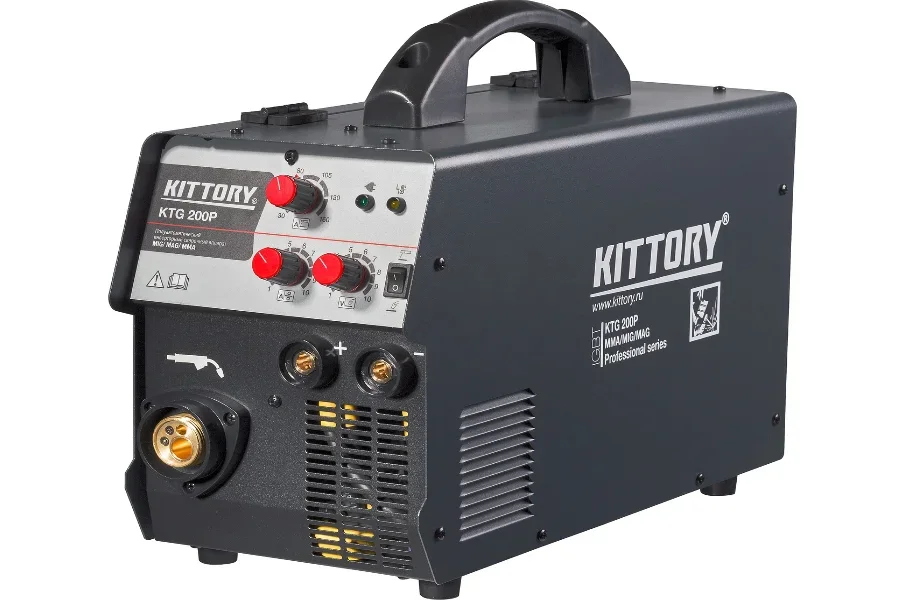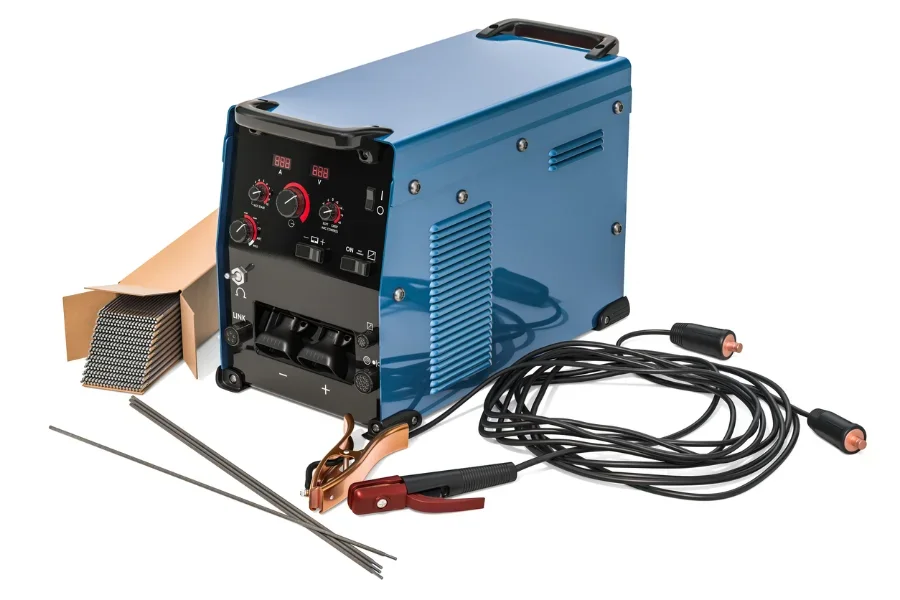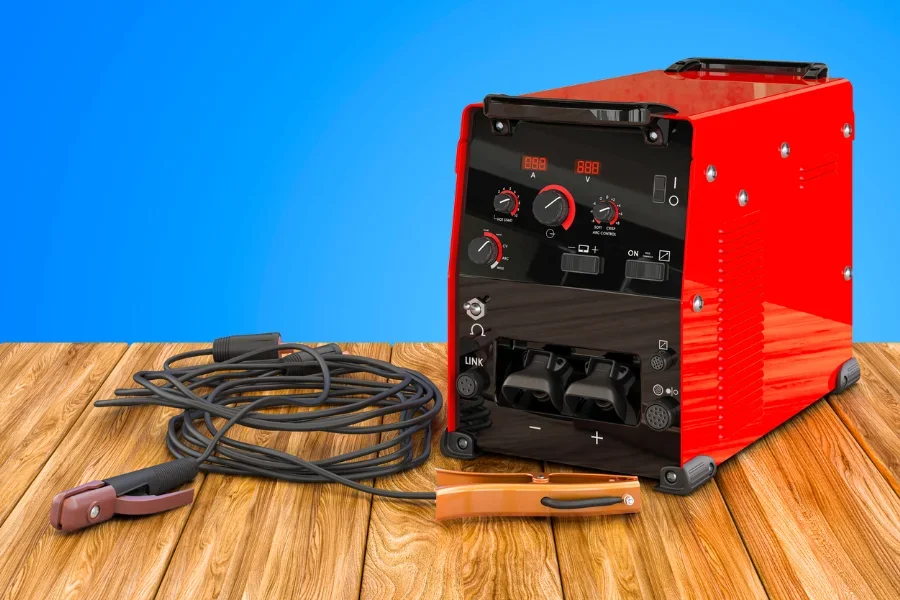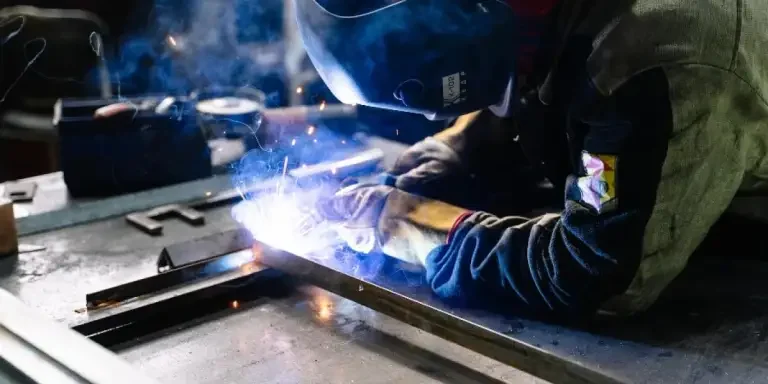Welding involves joining metals by melting them and allowing them to cood, creating a permanent bond. Welding has been used by fabricators for thousands of years to create different objects, including weapons, machinery, and furniture. Welding is vital in many arenas, such as the automotive, construction, and aerospace industries.
The demand for welding machines has increased considerably with the growth of industrialization. According to Fortune Business Insights, the global welding equipment market was valued at US $20.99 billion in 2021 and is expected to grow to US $28.66 billion by 2028, with a CAGR of 4.6% during the forecast period.
In this article, we will examine the different types of welding machines and the factors to consider when choosing a welding machine.
Table of Contents
Types of welding machines
Factors to consider when picking a welding machine
Conclusion
Types of welding machines
There are different types of welding machines, each with their own specific applications. For example, some machines are best for indoor use, while others are best for the outdoors.
Metal inert gas welding machines

A metal inert gas (MIG) welding machine is a type of arc welding machine that creates a weld using a shielding gas and a continuously fed wire electrode. MIG welding machines use bare wires and flux cores. The bare wire welds thin pieces of metal, and can be used outdoors without a gas supply.
MIG welding machines are mainly used in the automotive industry because they weld thin materials quickly and easily. Moreover, beginners commonly use MIG welding as it is cheaper and easy to learn.
Advantages
- Fast and efficient
- Can be used on various materials, including steel, aluminum, and stainless steel
- Produces a clean and precise weld
- Easy to learn and use
Disadvantages
- Requires a constant supply of shielding gas, making it less portable than other welding machines
- Can be used on materials that are clean and free from rust
- Unsuitable for welding thick materials
Tungsten inter gas welding machines

Tungsten inter gas (TIG) welding machines use a tungsten electrode and a shielding gas to create a weld. In TIG welding, the welder controls the amperage and the gas flow.
TIG welding machines are one of the most versatile types of welding but also the most difficult as you need two hands for welding, one to hold the rod and the other the TIG torch. TIG welding machines are mainly used to weld stainless steel, aluminum, bronze, gold, and copper alloys because it produces a clean and precise weld.
Advantages
- Produces high-quality, clean, and precise welds
- Can be used on a variety of materials
- Allows the welder to control the welding process
- Produces less smoke and fumes
Disadvantages
- Slow process, making it less efficient than other processes
- Requires a high level of skill and experience
- Unsuitable for welding thick materials
- The machines are more expensive
Stick welding machine

Also known as shielded metal arc welding (SWAM), stick welding machines use a consumable electrode coated in flux to create a weld. Stick welding machines are commonly used in construction and repair work because they are able to weld thick materials.
Stick welding machines are also economical since they use less electricity to make strong welds. Moreover, the machines are generally cheaper, making them a desirable choice for professional and personal use.
Advantages
- The machine is cheaper than other machines
- Uses less electricity.
- Can be used on various materials, including steel, cast iron, and aluminum
- Can be used outdoors and in windy conditions
- Can weld thick materials
Disadvantages
- Produces a lot of smoke and fumes
- Requires the use of a flux-coated electrode, which can be messy
- Produces a less precise weld than other welding processes and machines
Plasma arc welding machine
Plasma arc welding machines use a high-velocity jet of ionized gas to create a weld. Plasma arc machines can be used to weld materials that are harder to weld using other methods like titanium and super alloys.
Plasma arc welding machines are similar to TIG machines but have an anode surrounding the tungsten electrode, constricting the arc and allowing for laser-precision aiming. Plasma arc welding machines are primarily used in the aerospace industry.
Advantages
- Produces a precise and high-quality weld
- Can be used on various materials, including titanium, aluminum, and stainless steel
- Can be used to weld thin materials
- Produces minimal distortion
Disadvantages
- Expensive.
- Requires a high skill level and experience to use
- Needs a clean and dust-free environment
Resistance welding machines
Resistance welding machines use heat generated by the flow of electric current through the metals to create a weld. Resistance welding is commonly used in the automotive and electronics industries.
Advantages
- Fast and efficient
- Produces a clean and precise weld
- Can be used it on various materials, including steel, aluminum, and copper
Disadvantages
- Unsuitable for welding thick materials
- Requires a clean and dust-free environment
- Unsuitable for coated and painted materials
Factors to consider when picking a welding machine
When choosing a welding machine, there are several factors to consider, including:
Materials
Different welding machines are designed to work with specific materials. Therefore, the materials that you will be welding is the most important factor to consider when choosing a welding machine. This not only includes the type of material that you intend to use but also whether it is painted or rusted and how clean it is.
For example, MIG welding is suitable for welding aluminum, while TIG is best for welding stainless steel.
Thickness of material
The thickness of the materials is important when determining the right welding machine. For instance, one should use stick welding and resistance welding machines for thicker materials, and TIG and MIG for thinner materials.
Budget
Welding machines vary in price, therefore, it is important to consider budget when choosing a welding machine. However, you must also consider the wear and tear of the machine so as not to incur extra repair costs down the road. Some portable machines go for as low as US $32, while others go as high at US $4,000.
Power requirements
Welding machines have different power requirements. Make sure that you buy a machine that is compatible with your power supply. For instance, stick welding machines use less power.
Welding position
Some welding machines are designed to work in specific configurations, such as in overhead, flat, horizontal, or vertical positions. So, make sure to choose a machine depending on your needs.
Conclusion
Several types of welding machines are available in the market, each with their own advantages and disadvantages. Some of the most common welding machines are MIG, TIG, stick, plasma arc, and resistance welding machines.
When choosing a welding machine, it is essential to consider the materials you need to weld, the thickness of the materials, and your budget. Moreover, you must also consider the welding position and power requirements.
Considering these factors, choose the right machine for you from thousands of options on Alibaba.com.




